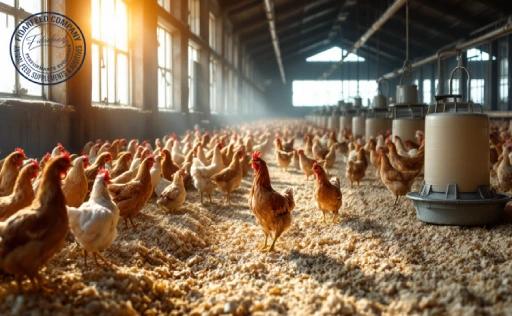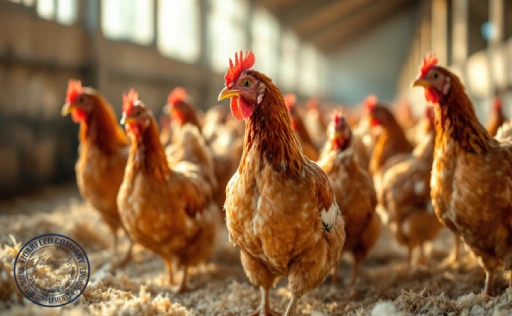Microencapsulation for enhanced animal feed additives is rapidly transforming the way breeders and feed producers approach animal nutrition. Whether you’re raising poultry, cattle, fish, or pets, one of the most pressing challenges is ensuring that feed additives — such as vitamins, probiotics, and enzymes — remain stable, effective, and bioavailable throughout the digestive process. This is where microencapsulation steps in as a game changer. In this article, we’ll explore how this technology works, why it matters, and how you can use it to improve animal performance, health, and profitability. Keep reading for a practical, science-backed breakdown designed for both experienced breeders and newcomers alike.
What Is Microencapsulation and Why It Matters in Animal Feed
A Simple Explanation of the Technology Behind Better Feed Additives
Microencapsulation is a process where tiny particles or droplets of feed additives are surrounded by a protective coating — essentially “micro-packaging” the ingredient. This outer shell protects the core material from heat, moisture, oxidation, or premature release, ensuring the additive reaches the target site in the digestive system before being absorbed.
Learn more about: Alternative Feed Ingredient
In simpler terms: it helps sensitive nutrients survive processing, storage, and digestion. For breeders and feed formulators, this means more consistent results and improved animal health outcomes.
How Microencapsulation Enhances Animal Feed Additives
Unlocking Improved Stability, Efficiency, and Performance in Every Dose
The primary goal of microencapsulation for enhanced animal feed additives is to improve the efficiency and precision of nutrient delivery. Without protection, many active ingredients degrade before they can be absorbed — either during pelleting, storage, or inside the animal’s digestive tract.
Learn more about: Smart Shopping: The Probiotic Online Buyer’s Guide for Animal Feed Supplements
With microencapsulation, additives like probiotics stay alive longer, vitamins remain potent, and enzymes resist breakdown in acidic environments. This controlled release not only increases bioavailability but ensures that animals actually get the intended benefit from every feed portion.
Benefits of Microencapsulation for Breeders and Farmers
Longer Shelf Life, Better Absorption, and Targeted Nutrient Delivery
For animal breeders and farmers, microencapsulation brings real, measurable benefits:
-
Extended shelf life: Additives stay stable during long storage periods, even in varying temperatures and humidity.
-
Improved digestibility: The encapsulated form helps nutrients pass through the harsh upper gastrointestinal tract and release at the right moment.
Learn more about: Top Bentonite Manufacturers for Animal Feed: What to Look For
-
Reduced feed waste: Since active ingredients aren’t lost during processing, less is needed to achieve desired results.
-
Enhanced animal health: By delivering additives more effectively, breeders see better immunity, growth rates, and feed conversion.
These benefits translate into cost savings, better production efficiency, and improved animal welfare.
Common Animal Feed Additives That Use Microencapsulation
Vitamins, Enzymes, Probiotics, and More — Made More Effective
Several types of feed additives are now commonly microencapsulated to boost performance:
-
Vitamins (A, D, E, K): Prone to oxidation, these vitamins benefit greatly from protective coatings.
-
Probiotics: Live microorganisms that need protection to survive heat and stomach acids.
-
Enzymes: Sensitive to high temperatures used during feed pelleting.
-
Essential oils and organic acids: Volatile substances that are better utilized when released gradually.
-
Amino acids and minerals: Encapsulation helps reduce losses due to interactions with other feed components.
Each of these additives becomes more reliable and effective when delivered through microencapsulation.
The Science Behind Microencapsulation Technology
How Encapsulation Works and Why It Helps in the Digestive Tract
At the core of microencapsulation is a simple concept: protect and control. Using materials like starch, alginate, gelatin, or lipid-based coatings, feed manufacturers create capsules that shield the active compound during mixing, pelleting, and digestion.
Learn more about: Meat Meal in Animal Feed: What It Is, How It’s Made, and Why It Matters
Once inside the animal’s gut, the coating dissolves or breaks down at specific pH levels or by enzymatic action, releasing the additive where it’s most needed — often in the intestines, where absorption is most efficient.
This delivery system improves both the survivability of sensitive nutrients and the timing of release, making digestion smoother and nutrient uptake more predictable.
Practical Examples of Microencapsulation in Livestock Nutrition
Real-World Applications That Boost Growth, Immunity, and Efficiency
Let’s look at how this works in real farm environments:
-
In poultry farms, microencapsulated organic acids improve gut health, leading to lower mortality rates and faster weight gain.
-
In dairy herds, encapsulated fat-soluble vitamins like A and E improve reproductive performance and udder health.
-
In aquaculture, microencapsulated probiotics enhance immune response and help fish resist common waterborne diseases.
Learn more about: Your Essential Checklist When Selecting Bulk Animal Feed Suppliers
These results aren’t hypothetical — they’re documented in multiple scientific studies and echoed by livestock professionals who’ve implemented the technology.
Microencapsulation vs. Traditional Additive Delivery Methods
Key Differences That Can Affect Your Animals’ Health and Your Profitability
Traditional feed additives often lose their effectiveness during processing or are quickly degraded in the digestive tract. This leads to:
-
Inconsistent results
-
Higher dosages required to compensate for loss
-
Increased feed costs without proportional benefits
Learn more about: biotechnology in animal feeds and animal feeding
In contrast, microencapsulated additives are more stable, more predictable, and more efficient. Even if the upfront cost is slightly higher, the return on investment is significantly better, especially when considering reduced veterinary expenses and better overall performance.
Challenges and Limitations of Microencapsulated Feed Additives
What Breeders Need to Know Before Making the Switch
Despite the advantages, microencapsulation does have some limitations:
-
Higher initial cost: Encapsulated products are more expensive to produce.
-
Special handling and formulation: Not all feed mills are equipped to process these materials correctly.
-
Variable release profiles: If poorly formulated, some additives may release too early or too late.
However, these challenges can often be managed through proper planning, consultation, and training. For many breeders, the long-term benefits far outweigh the limitations.
How to Choose the Right Microencapsulated Additives for Your Animals
Important Considerations Based on Species, Age, and Feed Composition
Before choosing microencapsulated products, ask yourself:
-
What species am I feeding? (Ruminants, monogastrics, fish, etc.)
-
What is the age and production stage of the animals?
Learn more about: Why Choose Prepared Feed for Your Farm Animals: Livestock, Poultry, and Aquaculture
-
What other feed components are involved? (To avoid nutrient conflicts)
-
What are the farm’s goals? (Growth, reproduction, immunity, etc.)
Selecting the right product — and ensuring it’s included at the proper dosage — is critical to achieving results. When in doubt, consult an animal nutritionist or feed specialist familiar with encapsulated technologies.
Final Thoughts: Is Microencapsulation the Future of Animal Feed?
A Smart Innovation for Breeders Looking to Improve Results Sustainably
Microencapsulation for enhanced animal feed additives isn’t just a passing trend — it’s a solid, science-backed solution to many of the challenges breeders face today. It protects valuable nutrients, delivers them precisely where they’re needed, and helps animals grow healthier with greater efficiency.
In a world where feed costs are rising and animal health standards are higher than ever, this technology offers a way to improve outcomes without overusing resources or medications.
As breeders, your animals rely on you for their daily nutrition and care. By embracing innovations like microencapsulation, you not only meet today’s standards but prepare for the future of sustainable, profitable farming.
Have you used microencapsulated feed additives on your farm? We’d love to hear your experiences, questions, or ideas. Leave a comment below and join the conversation.











